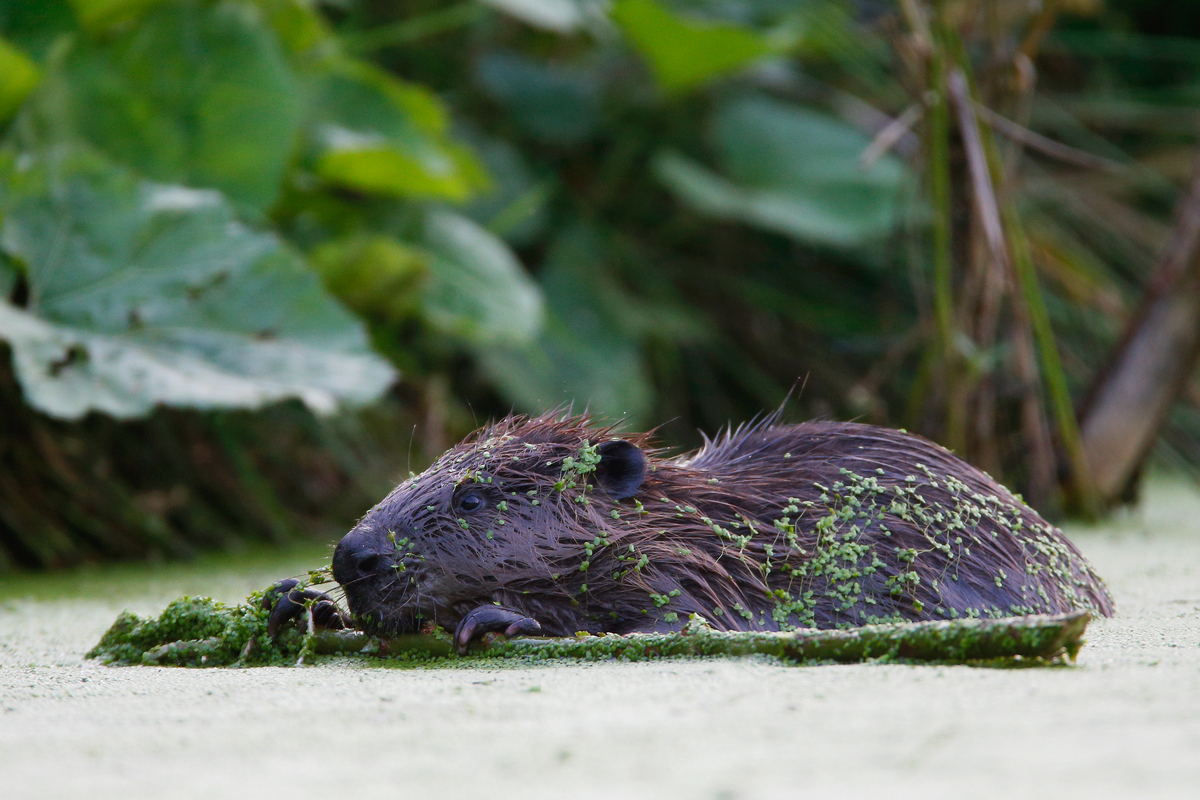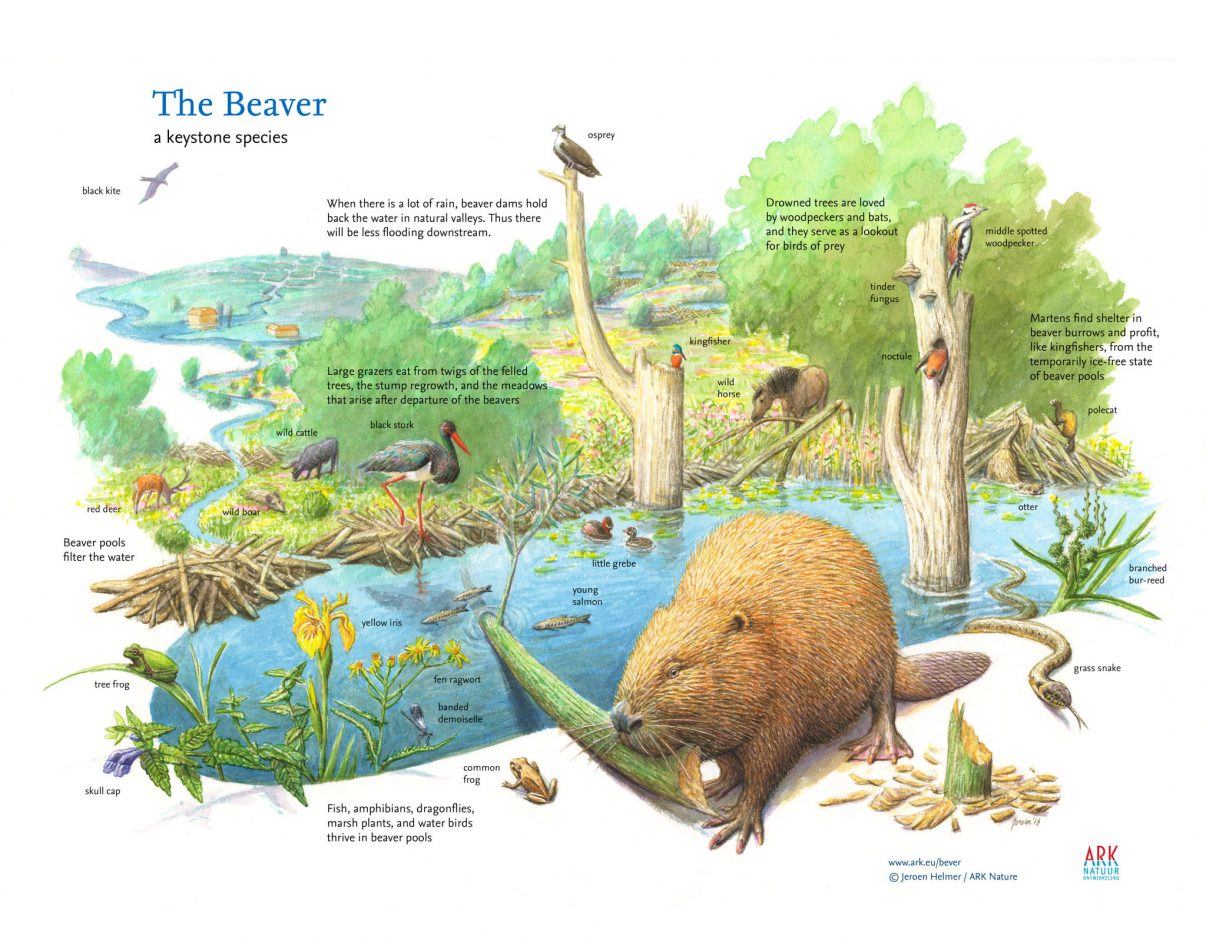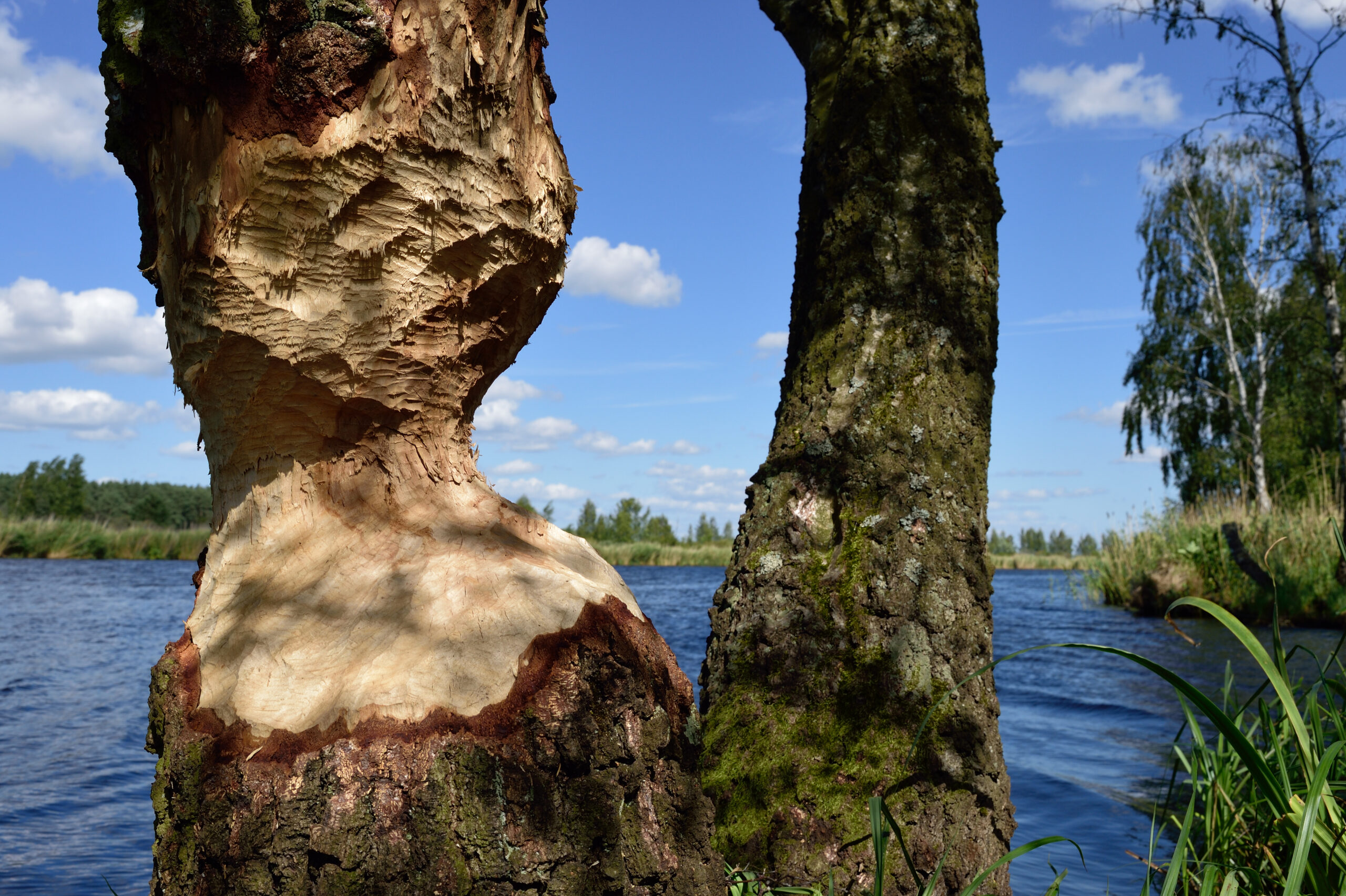After centuries of absence, evidence of the presence of the European beaver (Castor fibre) in Portuguese territory has finally emerged, following monitoring by Rewilding Portugal in a border area with Spain. The natural dispersal of this true river engineer to Portuguese territory represents not only the return of a species that was once locally extinct, but also one of the most significant steps in the aquatic rewilding of our rivers in Portugal.
AN ANNOUNCED COMEBACK
The last known record of beavers in Portugal probably dates back to the end of the 15th century. Since then, this emblematic species has disappeared from our rivers, a victim of intensive hunting and habitat destruction.
However, after two decades of population recovery in Spain, and recently with signs of documented closeness to the Portuguese border confirmed in various monitoring actions carried out in the field by Rewilding Portugal, unequivocal signs of their presence in national territory have finally been found. Gnawing marks began to appear on trees and structures manipulating the watercourse, typical of this species’ activity, and the timely placement of photo-trapping cameras confirmed the presence of a young adult in Portuguese territory.
In 2023, Expresso newspaper already reported that the beaver was about 150 metres from the Portuguese border, with consistent records in the Arribes del Duero Natural Park, near the border with Portugal. Rewilding Portugal already warned in that same article that its return would only be a matter of time – and preparation. And what was said at the time has come true: the beaver is back. Not the preparation we were actively asking for.
“We’ve been on the lookout for this breakthrough for a few years now, and now we’re thrilled to confirm its return. The beaver is a natural ally in restoring the health of our rivers and wetlands and has a fundamental role to play in our river ecosystems,” says Pedro Prata, Team Leader at Rewilding Portugal.

AN ENGINEER AT THE SERVICE OF OUR RIVERS
The beaver is a true ecosystem engineer. Their instinctive behaviour of building dams, digging channels and modifying riverbanks profoundly transforms the landscape, bringing diversity, water retention and life to it. These changes promoted by the beaver have profoundly beneficial effects on biodiversity and the ecological resilience of riparian habitats.
By building dams, beavers create small wetlands, marshes and areas of standing water – habitats that are home to a huge variety of species: amphibians, aquatic insects, water birds, fish and small mammals. A real contribution to enriching biodiversity in and around these watercourses. These wetlands also act as natural water filters, retaining sediment and pollutants and reducing the speed of surface runoff, which mitigates the effects of flooding and erosion.
“We’re talking about a species that provides ecological services that no modern equipment can replicate with the same efficiency and scale, without costs and bureaucracy that can never be overcome. The beaver improves water quality, creates refuges for other species and helps us fight phenomena such as drought and fires,” emphasises Pedro Prata.
On the other hand, by raising the water level on riverbanks, beavers increase water retention in the soil, something that is particularly relevant in contexts of prolonged drought and desertification – two phenomena that are increasingly present in the countryside of Portugal. Their structures help to store water in the territory, releasing it gradually throughout the year.
In addition, there is growing evidence that the habitats created by beavers act as natural lines of defence against forest fires by maintaining permanently damp areas, which break the advance of fire and offer shelter to countless species during the most critical periods.

KEY SPECIES FOR THE REWILDING MOVEMENT
The concept of rewilding has gained prominence in recent years as an innovative and systemic approach to restoring ecosystems through the return of key species, giving nature and all its components the time and space they need to evolve without human intervention. The beaver is undoubtedly one of the best European examples of this philosophy in action. Its recovery through natural expansion represents an invaluable boost for Portuguese rivers, many of which are degraded, channelled, artificialised and ecologically poor.
As Rewilding Portugal argues, the return of the beaver should not just be tolerated – it should be harnessed as a lever for positive ecological transformation. This is a concrete opportunity to apply the principles of truly functional rewilding on the ground: restoring natural processes, giving nature back its role and creating more lively, resilient and biodiverse landscapes.
“The return of the beaver to Portugal is a symbol of hope and change. It shows that if we give nature space and time, it will respond. It’s now up to us to ensure that this return is well received and protected,” emphasises Pedro Prata.

COEXISTENCE WILL PLAY A FUNDAMENTAL ROLE
Of course, the return of the beaver brings challenges. Their presence can sometimes have an impact on riverside plantations or infrastructure that is poorly adapted to the natural dynamics of rivers. However, experiences in other European countries show that coexistence is possible and desirable, through simple and effective mitigation measures. Information, dialogue with local communities and technical support are essential to ensure that the return of this species is experienced as good news – and not as a problem.
In Sweden, for example, the beaver was reintroduced last century and financial compensation programmes were set up for farmers and forest owners affected by flooding caused by dams. In Germany, Beaver Managers have emerged to mediate conflicts between beavers and human activities by installing water level control devices (e.g. pipes in dykes to regulate the height of the water without destroying the dams) and promoting natural engineering solutions such as protective barriers next to agricultural fields and valuable trees, practices that have also been adopted in Switzerland. Even in France, several environmental education and awareness campaigns have been carried out on the importance of the beaver, and several illustrated guides have been produced on the benefits of beavers and methods for dealing with potential problems.
For the same reason, Rewilding Portugal, aware of this approach to the national territory, decided to make the discovery public and informed the competent authorities in good time and in detail, asking for preparation for this arrival and a plan to anticipate possible conflicts with local communities, acting in a preventive rather than reactive manner and immediately creating the conditions for the species to return in a prepared manner and based on positive coexistence. To date, this request has had no effect and no official effort has been made in this direction. Monitoring has continued, the beaver is officially back, and we’re still in time to support its return in a planned way and in harmony with what already exists. Rewilding Portugal is once again open to participating in this process.
For this very reason, the second congress dedicated to rewilding, which will take place in October/November in the Douro area, will have a large part dedicated to the return of the beaver and its planning and preventive coexistence. We aim to lead this discussion in a responsible, timely manner, focused on constructive dialogue and anticipating potential problems and challenges.
The arrival of the beaver in Portugal is a historic and symbolic milestone for nature conservation in our country. In a context of climate crisis and biodiversity collapse, it is a sign of hope and resilience for wildlife. But it’s also a call to action: to protect riparian habitats, restore ecological corridors, and support the return of species that are missing from our ecosystems.
Portugal now has a unique opportunity to write a new chapter in its relationship with nature. The beaver has already done its part and arrived in our territory. It’s up to us to continue.
